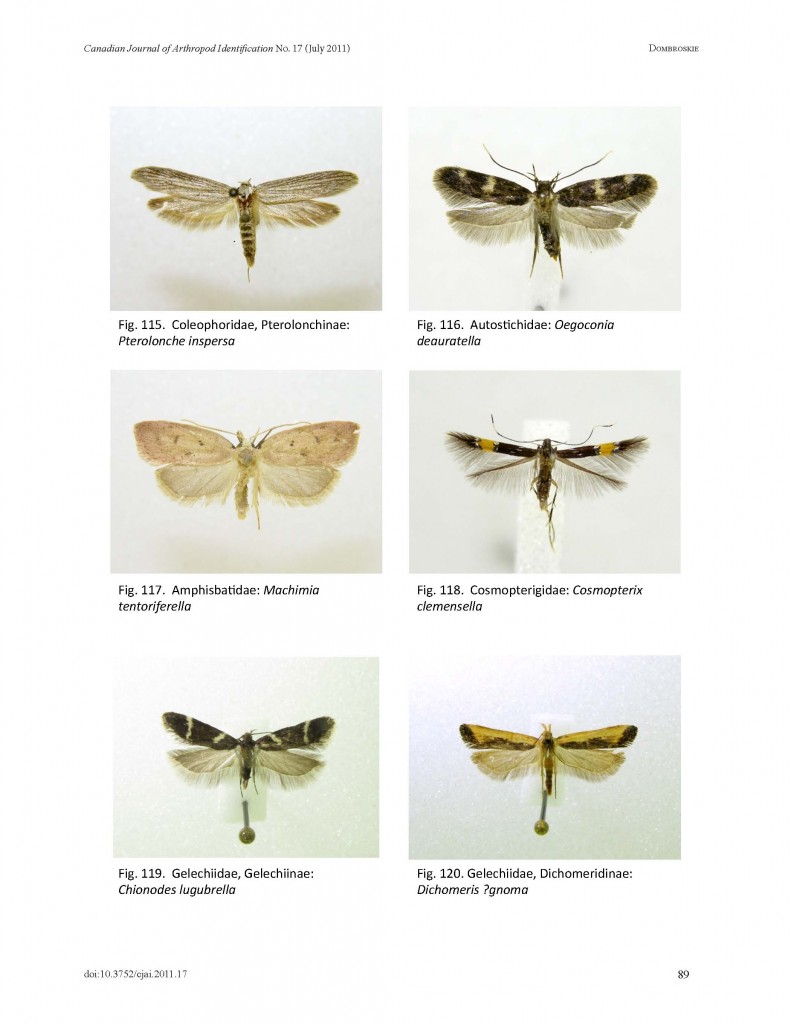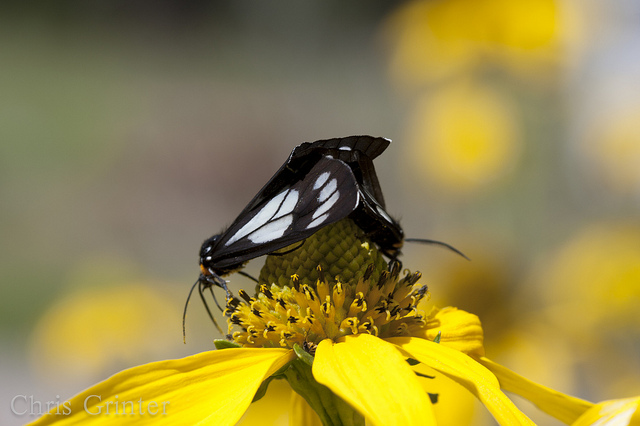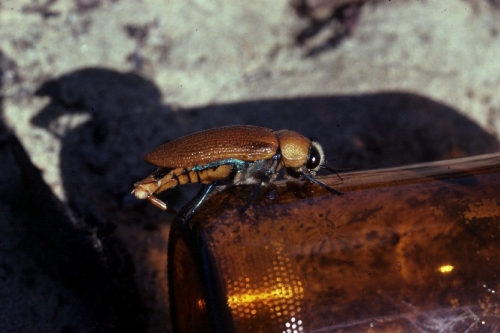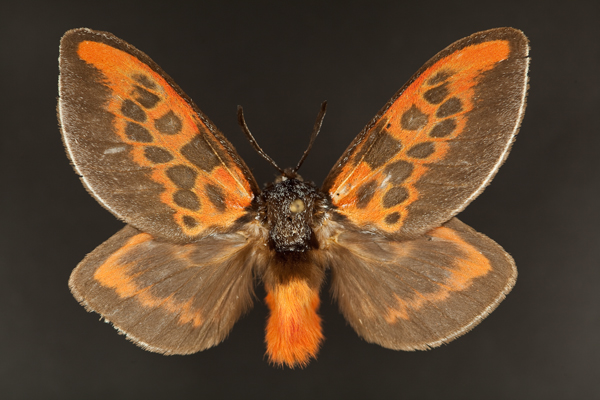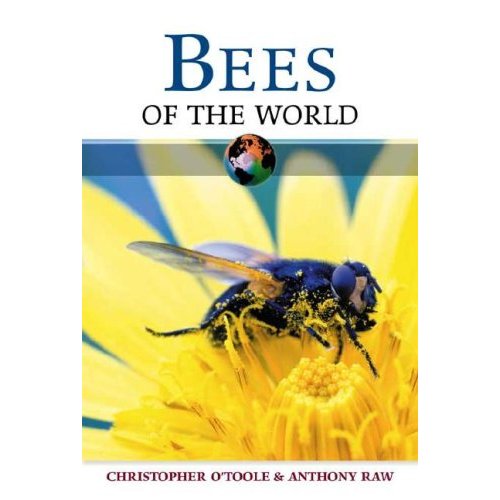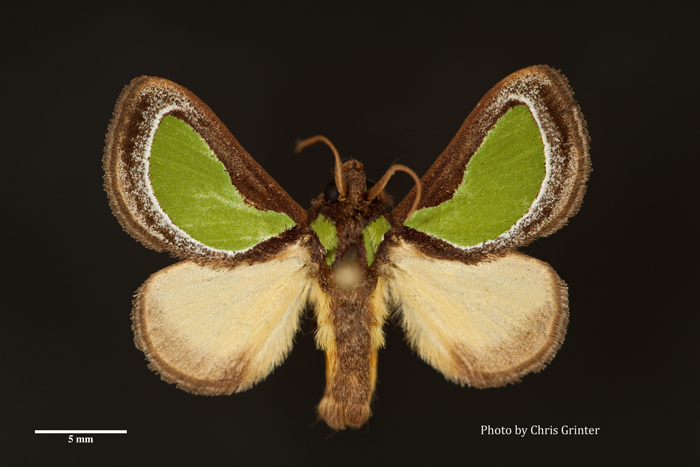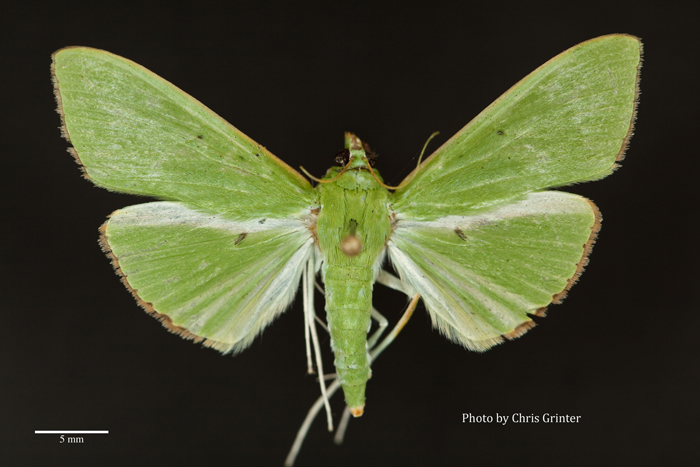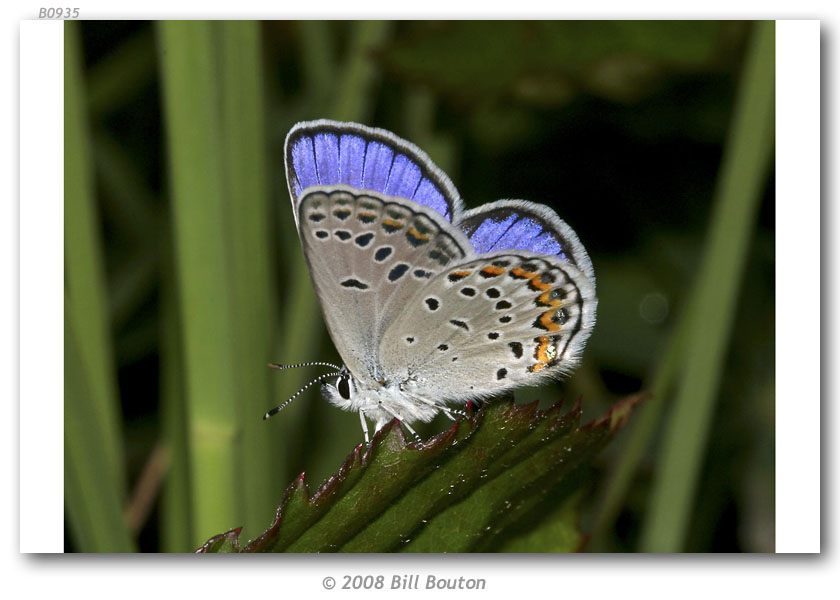For noen måneder siden en praktfull nøkkelen til Lepidoptera i Canada (dem alle) ble utgitt av Jason Dombroskie – en PhD student fra U. av Alberta. Programmet er tilgjengelig for Windows-brukere bare så jeg har ikke hatt en god sjanse til å utforske det ennå – men PDF-en er tilgjengelig på nettet og dekker det samme materialet. Alle kjente kanadiske Lepidoptera er inkludert i denne nøkkelen, og de fleste av dem ned til underfamilie eller til og med stamme! Det er 222 taxa, 73 karakterer og 266 karaktertilstander som bidrar til å begrense ting. Dette er den første referansen i sitt slag som nøyaktig og fullstendig dekker faunaen til et helt land og den første som bruker en godt illustrert og interaktiv nøkkel. Det er overraskende hvor godt kjente lepsene er, men hvor få gode referanser som finnes, nesten ingen av dem har en brukbar nøkkel. For alle der ute som har slitt med å identifisere leps før vil dette være en utrolig nyttig ressurs. Innvilget, det er sannsynligvis noen amerikanske møll som kan kaste en skiftenøkkel inn i strømmen av ting, men i det store og hele tviler jeg på at det vil være mange problemer.
|
This Monday moth is an Arctiinae, Gnophaela vermiculata. These beautiful day flying moths were abundant on yellow Helianthus flowers around 9000′ in the Santa Fe National Forest, New Mexico. Caterpillars feed on bluebells, but the adults prefer the highest quality nectar source in the area – which fortunately makes for easy and attractive photo subjects. I dag markerer en trist dag i fysikk historie, den Tevatron accelerator at Fermi Lab in Batavia Illinois was powered down for the last time. Når den nest mektigste akselerator i verden (og mektigste i USA), the new LHC has made this beautiful machine obsolete. I can only assume the teams of scientists working at Fermi were hopeful for further funding, but the grand ol’ days of big-budget physics was crushed by congress in 1993 with the cancelation of the SSC. Off to Europe our physicists go! I have many fond memories of visiting Fermi with my grade school science class. Every year Mr. House would take us to explore the physics and nature surrounding the lab. I recall a feeling of privilege when you visited a real working lab where there were no public displays with cute goggly-eyed atoms, just chalk boards full of Feynman diagrams and 3 day old cups of coffee. But it was probably the fully restored big bluestem prairie that grew on and around the 4 mile collider ring was where I had the most fun and is what left a lasting impact on my scientific career. And so it goes, the evolution of science in the US. I have noticed this particular trend: 1) An active science facility with lots of research has a tiny museum for public tours. 2) The research loses funding and the tiny museum takes over. 3) The museum is renovated to be more “familie” friendly and “interactive”, while science is pushed into the basements. 4) Whatever scientists are left (or students hired to act like scientists) are put under glass for the public to watch like strange creatures; all while true research fades into memory. Den 2011 Ig Nobel seremonien fant sted i går på Harvards Sanders Theatre. Prisen er sponset av Improbable Forskning, en organisasjon som samler fascinerende, merkelig, og regelrett morsomme forskningsrapporter som triumf ideen om at ikke all vitenskap er kjedelig. Blant årets utmerkede mottakere var andre entomolog og blogger David Rentz, som mottok IgNobel i biologi for en funn gjort i 1983 med kollega Darryl Gwynne i den australske utmarken. Til deres store overraskelse en viss type brun flaske med fordypninger i bunnen (“stubbies”) viste seg å være uimotståelig for hanner av Buprestid-billen
Gratulerer Dave og Darryl!
[youtube kZyIN23Cy4Y 480 360] Den mikroskopiske insektverdenen er en helt annen en fra vår, og vi sjelden får glimt inn i den. Thanks in part to the impressive Phantom camera system and the Flight Artists project researchers have filmed the minute (1mm!) Trichogramma wasp (Chalcidoidea) i flukt. These insects are egg parasites of Lepidoptera (amongst other groups undoubtedly) and can be used as effective biocontrol agents. As you’ll see in the video it’s been long understood that these wasps hitchhike on adult Lepidoptera waiting for fresh eggs, but it wasn’t know how they got there and if they were even flying onto the adult hosts. Stunningly, this wasp flaps its wings at ~350 times per second to achieve some astounding feats of movement. The biomechanics of this wing mechanism must be fascinating. Scroll ahead to 1:07 and watch the interaction of the two wasps – the one that flips off to the left of the screen moves in such a bizarre way it looks like bad CGI. I sure hope they record more species of minute flying insects!
Denne mandagen møll er en fantastisk kvinne av Neotropical Megalopygidae – Trosia nigrorufa. Ed Ross og Ev Schlinger samlet denne prøven i Peru i 1955, og jeg har hørt mange historier om disse episke ekspedisjoner. Jeg kan virkelig ikke forestille reiser via lasteskip, being gone for six or more months at a time and relying mostly on hand written correspondance. It must have made the world feel like a much larger place than it is today. Dette er en pen episk feil. Jeg antar at “ung voksen” publiseringsretningslinjer er mindre strenge med “fakta”.
Takk til Richard Lee Brown for første gangs innlegg på Facebook.
We all saw this day coming, the rise of the butterflies, the day they will take vengeance on us. No longer will they passively fly around their habitats as they are bulldozed for malls and polluted with runoff. One particularly angry Karner Blue has submitted a letter to the Onion warning us that our time is about up. Endangered little Lycaenidae will join hands and come after us some quiet night while we’re asleep in our beds. We at the Lepidopterists’ Society have even made their list for failing to take action. Together we should act before it is too late – let us preemptively strike before the rise of the blues. Save your families! Burn those styrofoam containers, pave the prairies, drive your off-road vehicles and take a stand against these fluttering fanatics! (or we could just save them…) There has been a continuing discussion over the last few years of why so few women remain in science. While I’m not going to dive into that topic here, you can find great discussions her, her, her og her. I don’t however think anyone argues about why women don’t enter science in the first place, especially when you see things like this. Way to print that soul crushing stereotype right on the front of your daughters shirt, JCPenny. (via Skepchick) |
Skepsis |
